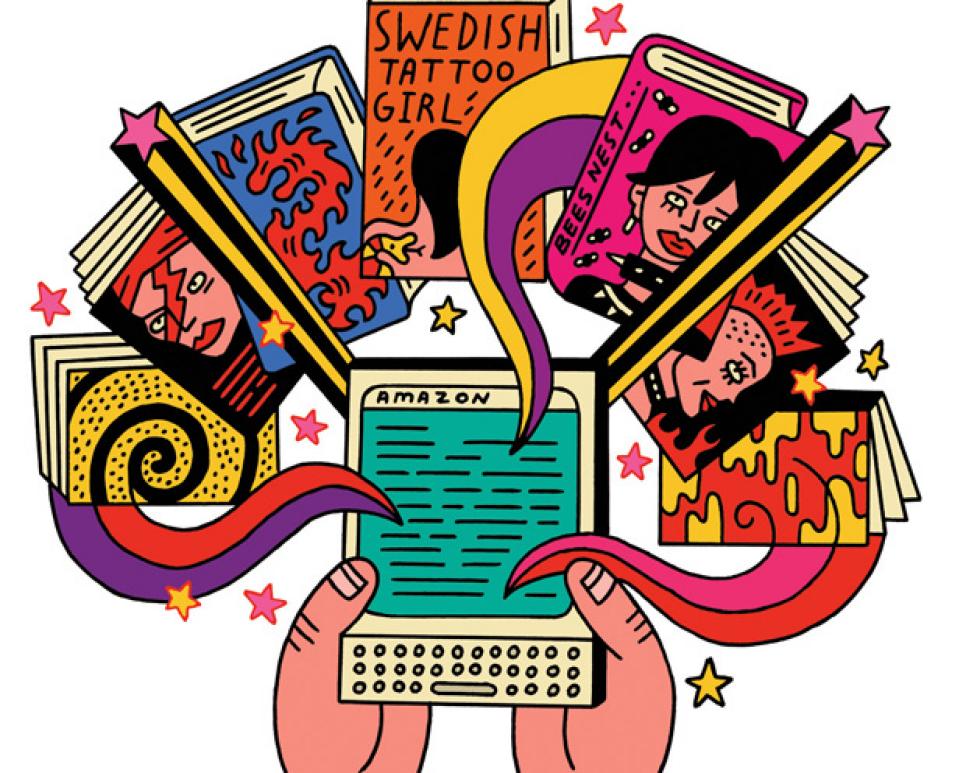Fun Read

My ideal day goes: bacon, golf, cheeseburger, golf, beer, steak, cards, sleep. Occasionally, though, I find myself with unstructured hours to fillsay, flying to or from golfand when I do I'm glad I learned to read. In the old days, I'd top off my carry-on bag with a couple of books; now, I take just my Kindle, which is sold by Amazon and is the best-known electronic reader, or e-reader. I bought my first one before a trip to Australia last year, and broke it in by reading those three novels about that Swedish tattoo girl. In fact, for most of the long flight home I was the only person on the plane who wasn't asleep. Recently, I bought a second Kindle, and gave my old one to my wife.
E-reader display technology was developed more than a decade ago, by MIT guys who were concerned about paper in the global-waste stream. Their invention, which is called electronic ink, consumes teensy bits of energyand none at all when it's merely displaying a page. On a Kindle, entire books download in seconds, with no connection fee, and I can go for weeks without having to recharge. My model is a Kindle 3G ($164 with Wi-Fi and free 3G; $114 in the cheapest configuration, with Wi-Fi only and occasional, unobtrusive advertisements). It's about the size of a slender paperback, yet holds thousands of books, magazines and other files.
The Kindle has lots of rivals. The main competitor, called the Nook, is sold by Barnes & Noble and other retailers. Like the Kindle, the Nook comes in more than one version; unlike the Kindle, one of those versions, the Nook Colorwhich doesn't use electronic ink, and is really a stripped-down tablet computerdisplays pages in color, has a touch screen instead of miniature, button-like keys, and can be used for email and Web surfing ($249, Wi-Fi only). The newest Nook, called the Simple Touch Reader, is smaller and lighter than the Kindle, and has a touch screen ($139, Wi-Fi only).
One of the best things about any e-reader is that you can adjust the size of the typea great feature for people who, through no fault of their own, have become almost 40 years older than they were when they went to college. And you can try before you buy. Barnes & Noble has demo Nooks in its bookstores, and Kindles are available from RadioShack, Staples, Walmart, and other retailers, as well as from Amazon. Here are factors to consider:
You don't need an e-reader to read e-books. During a long wait at the dentist's office recently, I used the Kindle app on my smartphone to read the book I'd been reading on my Kindle at home. And you don't need a Kindle to have a Kindle account, or a Nook to have a Barnes & Noble account (though you can't read Nook books on Kindles or Kindle books on Nooks). And if you own an iPad you can make it do everything a Nook Color can do, except be smaller.
The main thing you do with any e-reader, other than reading, is turning pages, so make sure you're happy with the method employed by the one you buy. Barnes & Noble makes much of the fact that Nooks don't have a lot of buttons, but I find the Kindle's page buttons (which sit naturally under my thumbs) to be easier and less annoying than repeatedly swiping, tapping the screen, or pushing the stubborn page-control ridges molded into the Nook's frame.
You can read a Kindle or Nook Simple Touch in bright daylight but not in the dark; you can read a Nook Color or iPad in the dark but not in bright daylight. My solution: I accessorized my Kindle 3G with Amazon's lighted leather cover ($60), which has an ingenious retractable LED that runs off the Kindle's battery. It's bright enough to illuminate the screen, but it doesn't wake up my wife or the person snoring in the middle seat.